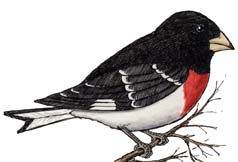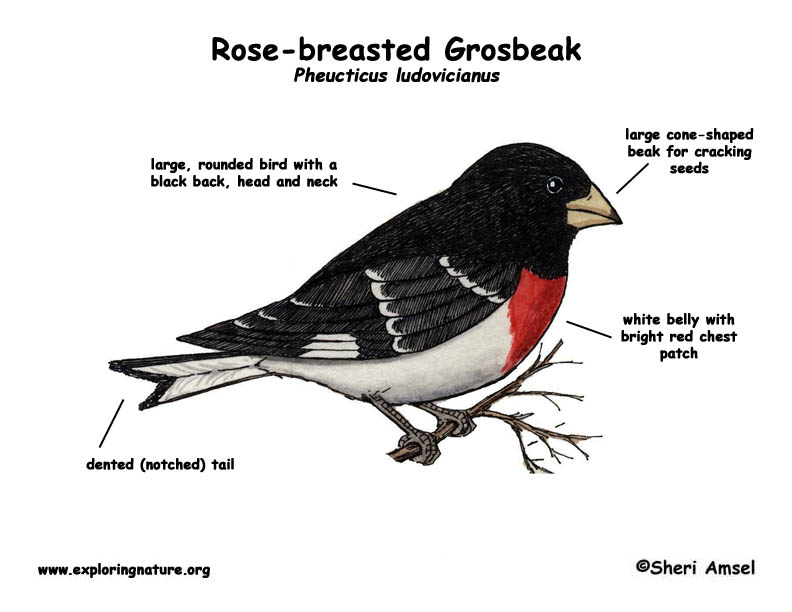

They spend the summers as far north as the Yukon, throughout eastern Canada and the eastern U.S. In the winter they go south to Mexico and South America.
They are found in deciduous woods, orchards, and yards.
They are large birds with a black back, white belly and red chest patch. Females are mottled brown and white. They have large beaks for cracking seeds.
They are common at bird feeders.
They eat insects, seeds and buds.
They build an open cup nest of twigs and grasses in trees. The females lay 1-5 light green-blue eggs.
Phylum: Chordata
Subphylum: Vetebrata
Class: Aves
Order: Passeriformes
Suborder: Passeri
Infraorder: Passerida
Family: Cardinalidae
Genus: Pheucticus
Species: P. ludovicianus
When you research information you must cite the reference. Citing for websites is different from citing from books, magazines and periodicals. The style of citing shown here is from the MLA Style Citations (Modern Language Association).
When citing a WEBSITE the general format is as follows.
Author Last Name, First Name(s). "Title: Subtitle of Part of Web Page, if appropriate." Title: Subtitle: Section of Page if appropriate. Sponsoring/Publishing Agency, If Given. Additional significant descriptive information. Date of Electronic Publication or other Date, such as Last Updated. Day Month Year of access < URL >.
Amsel, Sheri. "Grosbeak (Rose-breasted)" Exploring Nature Educational Resource ©2005-2024. December 13, 2024
< http://exploringnature.org/db/view/181 >

